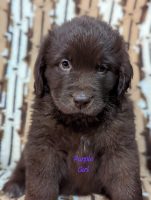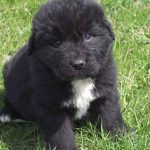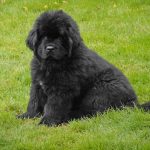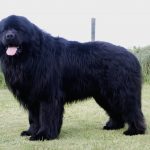 As one of the most distinctive breeds in the world, Giant Newfoundland dogs catch the eye of anyone who happens to come across one of these enormous canines. While their extreme size might make them the wrong type of pet for some people, Newfoundland owners love their massive dogs for their unique attributes that no other breed possesses. Beloved by dog breeders and owners across the world, there’s simply nothing quite like a Newfie if you’re looking for an extra-large pet that’s hungering for your love and affection.
As one of the most distinctive breeds in the world, Giant Newfoundland dogs catch the eye of anyone who happens to come across one of these enormous canines. While their extreme size might make them the wrong type of pet for some people, Newfoundland owners love their massive dogs for their unique attributes that no other breed possesses. Beloved by dog breeders and owners across the world, there’s simply nothing quite like a Newfie if you’re looking for an extra-large pet that’s hungering for your love and affection.
What Makes a Giant Newfoundland a Great Pet?
Newfoundland dogs get their name from the area of Canada where they were first bred. Originally the companions of fishermen in the Newfoundland area, these working dogs were prized for their immense strength and loyalty. Newfies have a calm and alert disposition and are ready to help whenever there’s trouble. These enormous dogs were originally beloved by Newfoundland fishermen for their incredible ability to save drowning men and drag objects out of the water.
Newfoundland dogs still have a strong sense of loyalty to their owners and will do their best to protect you. This protective instinct, combined with their gigantic size, makes these dogs the perfect companions for small children. These dogs are so good with kids that the creator of Peter Pan, James Matthew Barrie, chose a Newfoundland to play the role of nanny and protector of the children in his iconic series of plays and books.
Big, sweet, and loyal to a fault, Newfoundland dogs are the perfect breed to welcome into your home. That is, if your home is big enough to accommodate their extensive girth and your pockets are deep enough to satiate their endless appetite.
Types of Giant Newfoundland
The Newfoundland is a type of Mastiff, an ancient breed of dog that was once used by the Romans as conscripts in their conquering armies. Newfoundlands are separated into two distinct breeds; Lesser Newfoundlands, which are somewhat smaller and constitute the original genetic stock of the so-called “retriever” breeds, and Greater Newfoundlands, which are considerably larger than their Lesser cousins and which are also known as Giant Newfoundlands.
When it comes to Greater Newfoundlands, the main type of variation you’ll see from dog to dog is the color of the coat. The original Newfoundlands bred in Canada were either black or a black-and-white mixed pigmentation called Landseer. Since the time of their origin as fishing dogs in the frigid Canadian north, Newfoundlands have also crossbred to the extent that brown varieties are also available. However, to a true Newfie fanatic, a brown Newfoundland isn’t a true Newfoundland and some breeders only raise black and Landseer varieties.
Unique Attributes of the Giant Newfoundland
Beyond their epic size and impressive strength, Greater Newfoundland dogs also have a few other notable abilities and unique quirks. These types of dogs are equipped with two distinct layers of fur; a thick and water-resistant outer coat and a soft and rich inner coat. This double coat attribute helped keep Newfies from freezing as they spent a large amount of their time working in the cold waters of the Newfoundland area.
These dogs are also born swimmers that absolutely love to be in the water. A novice Newfoundland owner may be amazed at the startling clip with which these massive dogs make their way through the water. While this aquatic aptitude can be partially chalked up to the Newfie’s powerful musculature, these canines are also equipped with web toes that allow them to zip through the waves as if they were wearing flippers. To this day, Newfoundland dogs are used as aquatic rescue dogs due to their gentle demeanor, love of humans, and unquestioned mastery of the art of aquatic acrobatics.
Newfoundland Health and Disposition
Newfoundland dogs have long been called the “gentle giant” of dog breeds due to their serene calm and gentle attitude. While Newfies do have a powerful and deep bark, this booming sound is relatively hard to trigger and you won’t hear your Greater Newfoundland barking at everyone that walks down the sidewalk.
These sweet and gentle dogs are unfortunately quite short-lived. The average life expectancy for a Newfoundland is only 8 to 10 years and they are also prone to issues like hip dysplasia. However, due to their special attributes and loving dispositions, welcoming a Greater Newfoundland dog into your home is a decision you’ll never regret.








